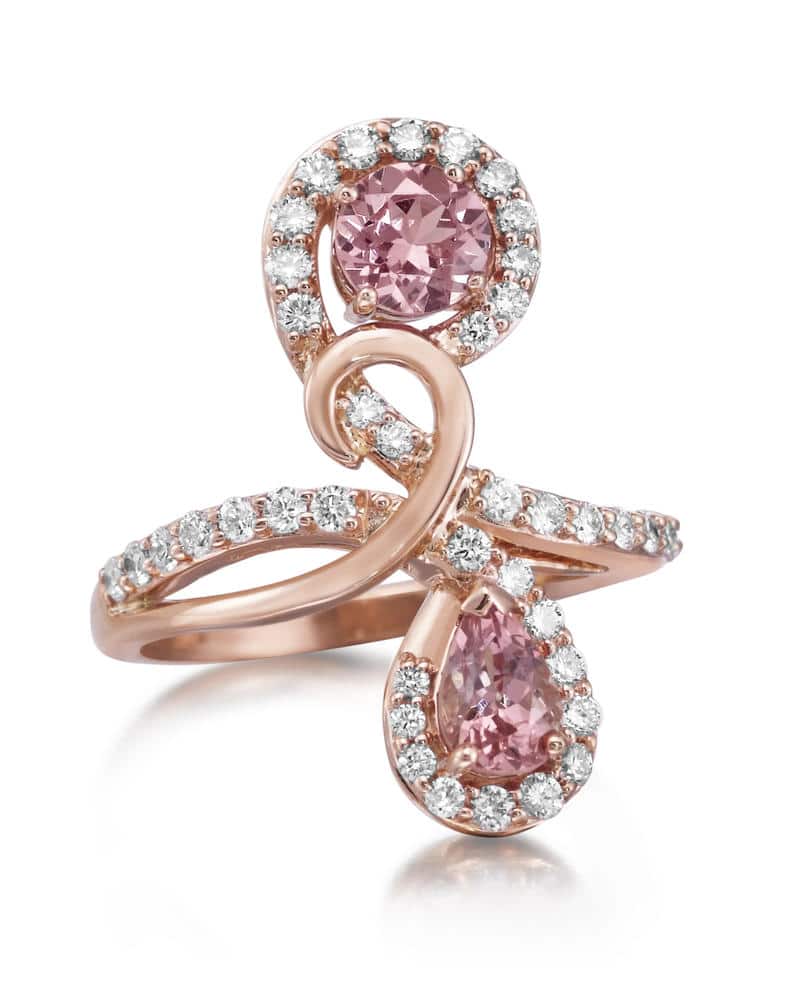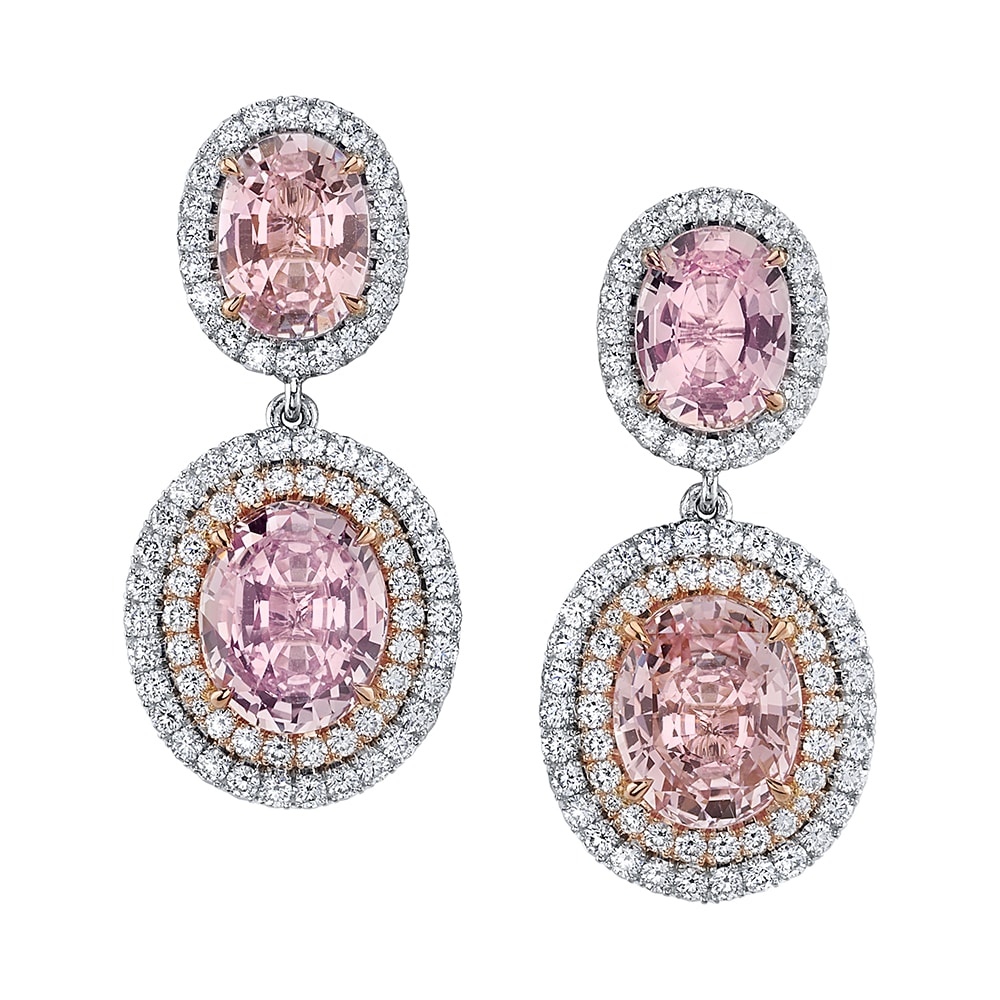By Isabelle Corvin, CG, Staff Gemologist at Panowicz Jewelers
What do cherries, almonds, apricots, and plums have in common?
They are all members of the “Prunus” genus and are a branch (pardon the pun) of the rose family, a trait shared by the peach.
Coincidentally, Pantone’s Color of the Year for 2024 has been revealed as “Peach Fuzz” (13-1023)!
This pastel mix of light orange and tender pink is easy on the eyes and mimics its namesake perfectly. In dyes and pigments, red, yellow, and white are often blended together to create a peachy color, with the amounts varying for more intense colors or something more muted.
The English word “peach” was first used to describe a color in 1588, so this reference has been around for a while.
Peach hues are often considered great backdrops to aid in restful sleep. The color represents immortality in Chinese culture, and the peach blossom appears in many myths worldwide as a symbol of love, longevity, inspiration, and luck.
Indeed, the soft and subtle peach tones evoke relaxing calm and optimism. An oasis among the often hyperactive and chaotic beat of everyday life.
Pantone refers to Peach Fuzz as a color that “…captures our desire to nurture ourselves and others. It’s a velvety gentle peach tone whose all-embracing spirit enriches mind, body, and soul.”
Gemstones that match the hue seem to echo that sentiment flawlessly. The first jewel that sparks to life in this color range is morganite.
This pink member of the prestigious beryl family is named after J.P. Morgan, the banker and mineral enthusiast.
Morganite is said to offer warmth, just like Pantone’s 2024 color, and to heal and support the heart physically and emotionally. Morganite is also stated to help overcome difficulties.
The hue and tone of morganites can range from pale pink to tinged with orange to a true “peachy” color. It offers a subtle yet stunning color that shines no matter what shape the gem is cut into.
Another gemstone that honors Peach Fuzz is lotus garnet.
Like morganite, these gems can range from light to medium in tone and offer more pink, orange, or purple hues, depending on the stone.
They are gentle in color but strong in shimmer and are a unique and somewhat unknown member of the garnet group.
True lotus garnet mixes three types of garnet (almandite, spessartite, and pyrope) and is completely untreated. The color is natural and is most often found in Tanzania.
Like morganite, this gem is linked to the heart, but it’s said to be a stone of inspiration. Some also claim it encourages sharing gifts with others.
Sunstone, an almost magical-looking member of the feldspar group of minerals, is a fun addition to the Peach Fuzz lineup. While it can come in an assortment of colors, there is a variety that showcases the shimmering effects of copper inclusions on a pale orange backdrop. This type of sunstone often comes from Oregon.
As the name would suggest, this feldspar is associated with the sun, and is said to be an energy stone, bringing vitality to the wearer. One look at the color and otherworldly glitter shows why!
Other gems that capture the color and meaning of Peach Fuzz are rare padparadscha sapphire, imperial topaz, and rose quartz.
Jewelry made from rose gold complements 2024’s Color of the Year. Not only is it a pink color, but it brings out the best of these “peachy” gemstones.
Peach Fuzz, a gentle hue, evokes the charm of spring blossoms and early summer sunsets. It buzzes with warmth and promise. Get wrapped up in the rosy color of Peach Fuzz and see where it will take you.


